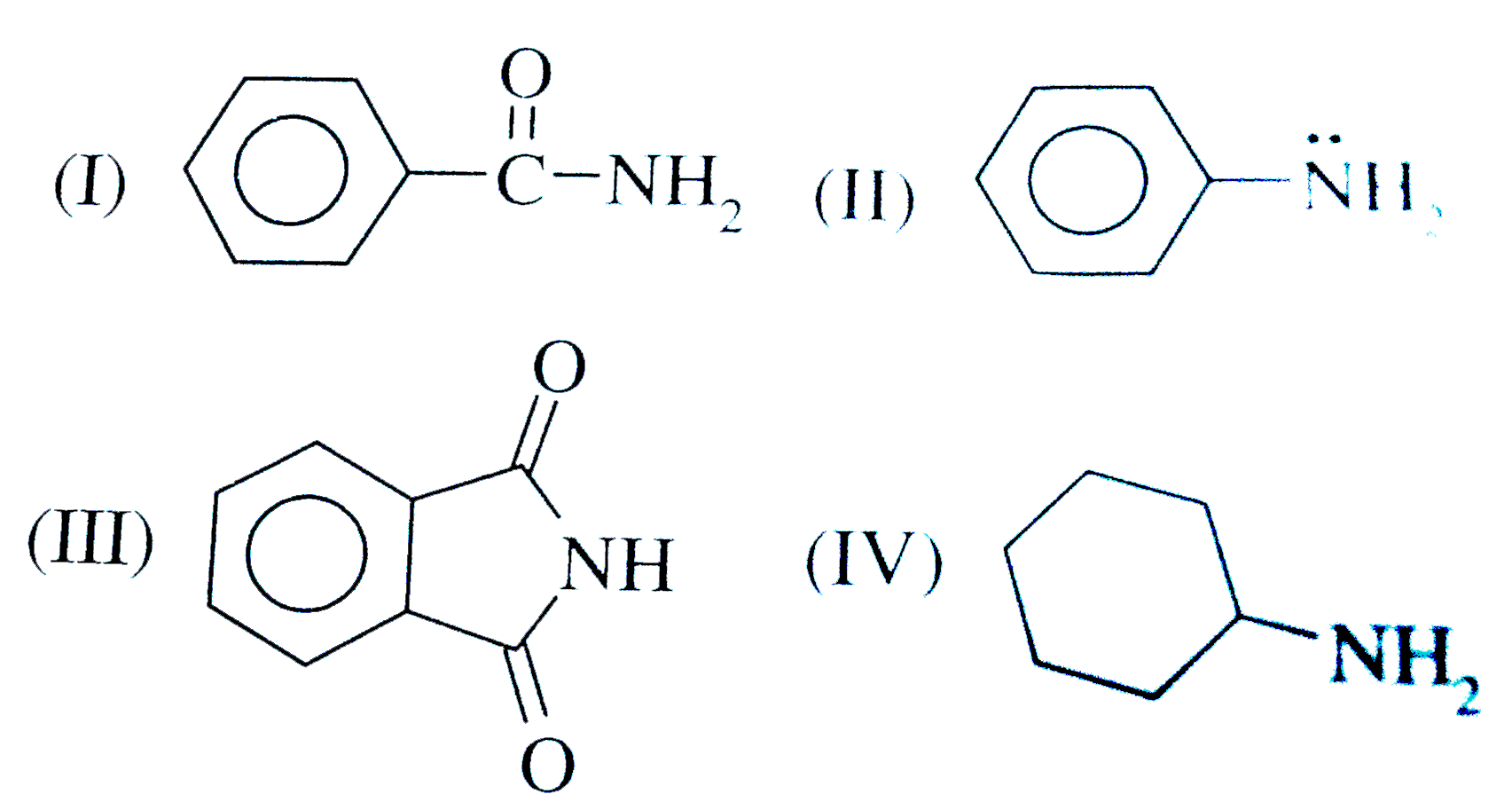Write the shapes of the hydrides of group 15 elements. Arrange them in order of (i) decreasing basic strength (ii) increasing bond angle (iii) decreasing character.
To solve the question regarding the shapes of the hydrides of group 15 elements and to arrange them in the specified orders, we will follow these steps:
Step 1: Identify the Hydrides of Group 15 Elements
Group 15 elements include Nitrogen (N), Phosphorus (P), Arsenic (As), Antimony (Sb), and Bismuth (Bi). The hydrides formed by these elements are:
- NH₃ (Ammonia) for Nitrogen
- PH₃ (Phosphine) for Phosphorus
- AsH₃ (Arsenic Hydride) for Arsenic
- SbH₃ (Stibine) for Antimony
- BiH₃ (Bismuth Hydride) for Bismuth
Step 2: Determine the Shapes of the Hydrides
The shapes of these hydrides can be predicted based on the number of lone pairs and bond pairs:
- NH₃: Trigonal pyramidal (due to one lone pair on Nitrogen)
- PH₃: Trigonal pyramidal (less pronounced due to larger size of P)
- AsH₃: Trigonal pyramidal (similar to PH₃)
- SbH₃: Trigonal pyramidal (similar to AsH₃)
- BiH₃: Trigonal pyramidal (similar to SbH₃)
Step 3: Arrange in Order of Decreasing Basic Strength
Basic strength of these hydrides decreases as we move down the group due to the increase in atomic size and decrease in electronegativity:
1. NH₃ (strongest base)
2. PH₃
3. AsH₃
4. SbH₃
5. BiH₃ (weakest base)
Step 4: Arrange in Order of Increasing Bond Angle
The bond angles decrease from NH₃ to BiH₃ due to the increasing size of the central atom and the resulting decrease in lone pair-bond pair repulsion:
1. BiH₃ (approx. 91°)
2. SbH₃ (approx. 92°)
3. AsH₃ (approx. 93°)
4. PH₃ (approx. 93.5°)
5. NH₃ (107°)
Step 5: Arrange in Order of Decreasing Reducing Character
Reducing character generally increases down the group:
1. BiH₃ (strongest reducing agent)
2. SbH₃
3. AsH₃
4. PH₃
5. NH₃ (weakest reducing agent)
Final Summary:
- Shapes of Hydrides: All are trigonal pyramidal.
- Decreasing Basic Strength: NH₃ > PH₃ > AsH₃ > SbH₃ > BiH₃
- Increasing Bond Angle: BiH₃ < SbH₃ < AsH₃ < PH₃ < NH₃
- Decreasing Reducing Character: BiH₃ > SbH₃ > AsH₃ > PH₃ > NH₃
Group 15 elements include Nitrogen (N), Phosphorus (P), Arsenic (As), Antimony (Sb), and Bismuth (Bi). The hydrides formed by these elements are:
- NH₃ (Ammonia) for Nitrogen
- PH₃ (Phosphine) for Phosphorus
- AsH₃ (Arsenic Hydride) for Arsenic
- SbH₃ (Stibine) for Antimony
- BiH₃ (Bismuth Hydride) for Bismuth
The shapes of these hydrides can be predicted based on the number of lone pairs and bond pairs:
- NH₃: Trigonal pyramidal (due to one lone pair on Nitrogen)
- PH₃: Trigonal pyramidal (less pronounced due to larger size of P)
- AsH₃: Trigonal pyramidal (similar to PH₃)
- SbH₃: Trigonal pyramidal (similar to AsH₃)
- BiH₃: Trigonal pyramidal (similar to SbH₃)
Basic strength of these hydrides decreases as we move down the group due to the increase in atomic size and decrease in electronegativity:
1. NH₃ (strongest base)
2. PH₃
3. AsH₃
4. SbH₃
5. BiH₃ (weakest base)
The bond angles decrease from NH₃ to BiH₃ due to the increasing size of the central atom and the resulting decrease in lone pair-bond pair repulsion:
1. BiH₃ (approx. 91°)
2. SbH₃ (approx. 92°)
3. AsH₃ (approx. 93°)
4. PH₃ (approx. 93.5°)
5. NH₃ (107°)
Reducing character generally increases down the group:
1. BiH₃ (strongest reducing agent)
2. SbH₃
3. AsH₃
4. PH₃
5. NH₃ (weakest reducing agent)
- Shapes of Hydrides: All are trigonal pyramidal.
- Decreasing Basic Strength: NH₃ > PH₃ > AsH₃ > SbH₃ > BiH₃
- Increasing Bond Angle: BiH₃ < SbH₃ < AsH₃ < PH₃ < NH₃
- Decreasing Reducing Character: BiH₃ > SbH₃ > AsH₃ > PH₃ > NH₃
Topper's Solved these Questions
- BOOK - PRADEEPCHAPTER - P-BLOCK ELEMENTS (NITROGEN FAMILY)EXERCISE - ADDITIONAL QUESTIONS (LONG ANSWER QUESTIONS)2videos
P-BLOCK ELEMENTS (NITROGEN FAMILY)
- BOOK - PRADEEPCHAPTER - P-BLOCK ELEMENTS (NITROGEN FAMILY)EXERCISE - ANALYTICAL QUESTIONS AND PROBLEMS WITH ANSWERS/SOLUTIONS (QUESTIONS)6videos
P-BLOCK ELEMENTS (NITROGEN FAMILY)
- BOOK - PRADEEPCHAPTER - P-BLOCK ELEMENTS (NITROGEN FAMILY)EXERCISE - ADDITIONAL QUESTIONS (VERY SHORT ANSWER QUESTIONS)47videos
P-BLOCK ELEMENTS (NITROGEN FAMILY)
- BOOK - PRADEEPCHAPTER - ORGANIC CHEMISTRY-SOME BASIC PRINCIPLES TECHNIQUESEXERCISE - Competition Focus (Jee (Main and Advanced)/Medical Entrance) VIII. Assertion-Reason Type Questions25videos
ORGANIC CHEMISTRY-SOME BASIC PRINCIPLES TECHNIQUES
- BOOK - PRADEEPCHAPTER - REDOX REACTIONS EXERCISE - Assertion reason type question16videos
REDOX REACTIONS
Similar Questions
Knowledge Check
- Question 1 - Select One
Arrange the following in order of their decreasing basic strength
 AIV>I>II>IIIBIV>I>III>IICIV>II>I>IIIDI>II>III>IV
AIV>I>II>IIIBIV>I>III>IICIV>II>I>IIIDI>II>III>IV - Question 2 - Select One
The basic strength of the hydrides of group 15 elements :
Adecreases on moving down the groupBincreases on moving down the groupCfirst decreases upto AsH3 and then increasesDfirst increases upto AsH3 and then decreases - Question 3 - Select One
Arrange the following hydrides of group 16 elements in order of increasing stability.
AH2S<H2O<H2Te>H2SeBH2O<H2Te<H2Se<H2SCH2O<H2S<H2Se<H2TeDH2Te<H2Se<H2S<H2O
Arrange hydroxides of group 2 elements in order of increasing basicity.
View SolutionArrange the hydrides of group 16 elements in order of increasing acid nature.
View SolutionArrange the hydrides of group 16 elements in order of increasing boiling point.
View SolutionArrange the following hydrides of group 16 elements in order of increasing stability.
View SolutionArrange the oxides of group 15 elements in decreasing order of their acidity
View Solution

